Armored cars "Russo-Balt Type C"
17 August 1914, Minister of War, Adjutant General V.A. Sukhomlinov ordered the Grand Duke Nikolai Nikolayevich to begin work on the creation of a new armored car, designed to arm the army. It was assumed that in the foreseeable future several such vehicles would be built, which would be combined into one armored machine-gun car battery. The direct executor of the project was appointed Colonel of the Life Guards Regiment A.N. Dobrzhansky. He was responsible for the development of the project and the further construction of new armored cars. It is noteworthy that shortly before the war, Colonel Dobzhansky was engaged in creating an armor-piercing bullet for the cartridge 7,62х54 mm R, and after the start of the conflict began to point out the need for a massive construction of an armored car.
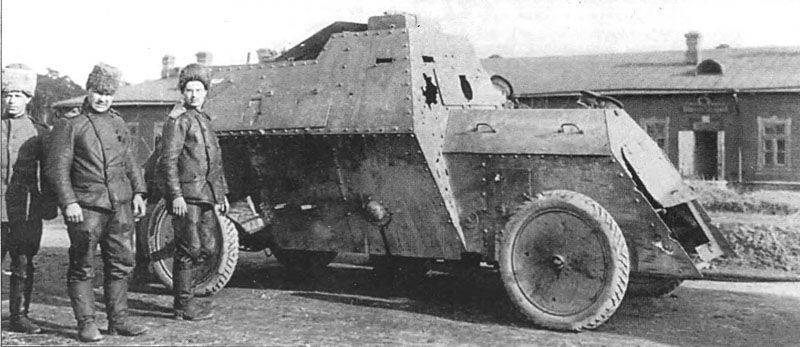
Having experience with armor and armor-piercing ammunition, Dobrzhansky proposed several original ideas aimed at increasing the level of protection of the armor case and reducing the mass of the structure. At the same time, in its overall architecture, the new armored car should not have differed from the other equipment of this class, created at that time. As a basis for the new armored vehicle, it was planned to take the finished chassis of a production car, over which the armored body should be mounted.
The base for a promising armored car was to be a mass serial passenger car C24 / 40 series XIII-bis Russian-Baltic plant ("Russo-Balt"). For the construction of armored vehicles were allocated eight chassis numbers from "530" to "542". Before starting work, the chassis was transferred to the Izhora plant. Armored rolling workshop №2 was to be engaged in the manufacture of cases.
During the development of the project, the new armored car received its own designation. Under the name of the base chassis it was designated as "Russo-Balt Type C". Under this name, armored cars went into series and were exploited by the troops.
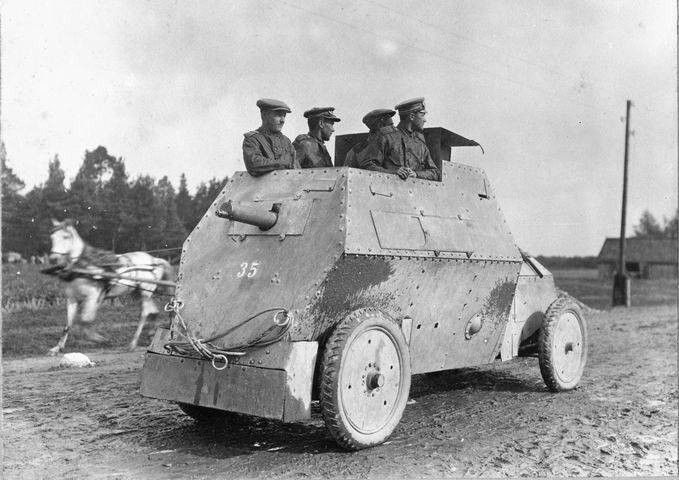
The development of the hull and armored car project as a whole was carried out by several specialists led by A.N. Dobrzhansky. At the same time, the engineer-mechanic Grauer, who had extensive experience in working with armor, was in charge of creating the armored case. The chromium-nickel armor steel of special hardening was chosen as the material for the hull. Sheets with thickness from 3 to 5 mm were proposed to be installed on the base frame using bolts and rivets. Grauer and Dobzhansky used several original ideas that allowed to increase the level of protection of the hull without the use of heavy armor. According to reports, they managed to provide protection against rifle bullets during shelling from distances to 200 m.
The armored body of the Type C car consisted of two main compartments: motor and habitable. To improve the protection performance, it was decided to place the main body armor plates at angles to the vertical. T.N. Rational booking angles made it possible in some measure to increase the level of protection without a serious increase in the weight of the whole structure. The forehead and stern of the car were protected by sloping sheets 5 mm thick, the beads were 3,5 mm thick, and on the top the crew was protected by an 3-mm roof. As it turned out later, the rational corners were not redundant, since they really allowed the protection of the car to be brought to an acceptable level.
The base chassis engine was located in the front of the case and was protected by an angular hood. Provided for a sloping frontal sheet with a hatch for ventilation and vertical sides. The hood lid was made in the form of two inclined and one horizontal panels. In this case, the side sheets were fixed on the hinges and could rise, opening access to the engine.
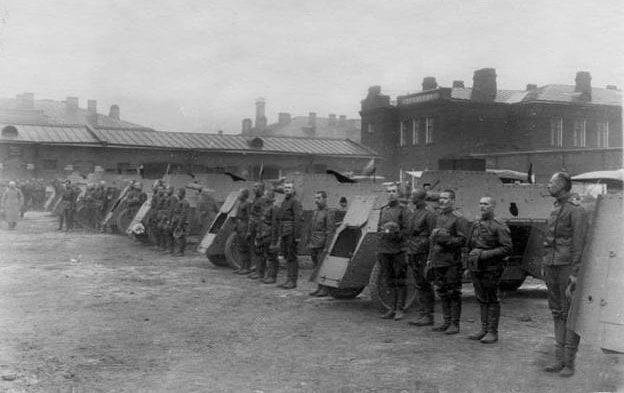
Inhabited housing compartment had a hexagonal frontal sheet associated with the hood. The sides of the hull consisted of two main parts: the lower parts were installed with the collapse outward, while the upper parts converged inward. The stern projection was protected by a large hexagonal sheet. In front of the habitable compartment provided a small superstructure. Thus, the management compartment roof was higher than the combat compartment roof.
The case was provided with a set of inspection gaps and hatches. The driver, who was located in front of the car at the starboard, had to follow the road through the inspection slits in the front plate and board. Landing in the car was made through the hatches at the bottom of the sides. In addition, in the front, rear and upper side plates provided hatches for machine guns with special mobile guards to protect the shooters.
Under the hood of the new armored vehicle was a petrol engine with an 40 horsepower. With the help of a mechanical transmission, the engine torque was transmitted to the driving rear axle. Like many cars of the time, the base car had a dependent suspension on leaf springs.
The crew of the Russo-Balt Type C combat vehicle consisted of five people: the driver, the commander and three shooters. Due to the small size of the habitable compartment, the landing of the crew members was extremely dense.
The armament of the new armored car consisted of three “Maxim” machine guns with liquid-cooled barrel. Especially for the new combat vehicle were developed two versions of machine-guns, installed next to the embrasures. In the front sheet, aft and sides of the hull provided for one embrasure of the original design. In the sheets of the hull, next to the machine gun, was provided a wide hatch of a relatively small height. Outside, this hatch was closed with a sliding cover mounted on special holders. In the center of the shield was a hole for the cover of the barrel of the machine gun with a small additional cut-out on top for aiming. Thus, when moving the machine gun in the horizontal plane, the shield slid in its holders and constantly closed the wide hatch, providing the required protection of the shooter. In addition, the design of embrasures made it possible to maximize the width of the shelled sector, providing some overlapping areas of responsibility of neighboring machine guns.
The Type C armored car had four similar embrasures, but it was equipped with only three machine guns. One machine gun was placed in the front and aft sheets, and the third was supposed to be installed on one of the side machines, depending on the situation on the battlefield. Along the sides of the hull racks for cartridge boxes were located. The total ammunition of the new armored car was 9000 ammunition - 3 thousand cartridges for each machine gun.
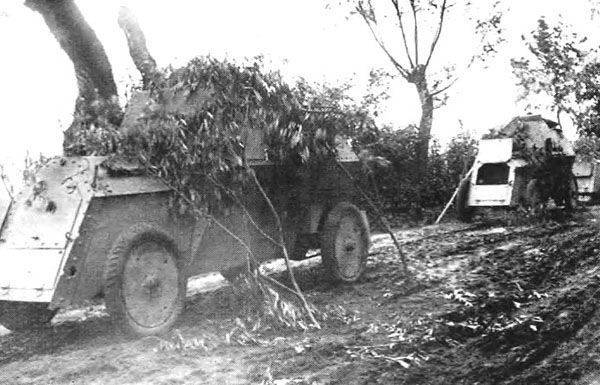
Because of the car chassis and related limitations, the car was compact and lightweight. The total length of the Dobrzhansky armored car did not exceed 4,5 m, its width and height were about 2 m. The combat weight with full ammunition and crew was at the level of 2,96 t.
The ratio of the characteristics of the base chassis and the new body has affected the driving characteristics of the armored car. Its maximum speed on a good road did not exceed 20 km / h. On rough terrain, the maximum speed was halved. The fuel supply was enough for 100 km of the way on the highway. However, for the start of the First World War, such characteristics were quite sufficient and allowed the new machine to perform its tasks effectively.
Development and construction of new armored vehicles "Russo-Balt Type C" took only a few weeks. A little more than a month after the first order of the Minister of War, the Izhora Plant completed the construction of all eight required armored cars. On September 19, four platoons of two cars each were formed. In addition, these platoons were soon reinforced by new armored vehicles with machine-gun and cannon weapons. Four platoons were consolidated into the 1 automobile machine-gun company, which was also attached to several auxiliary vehicles and unarmored trucks with weapons.
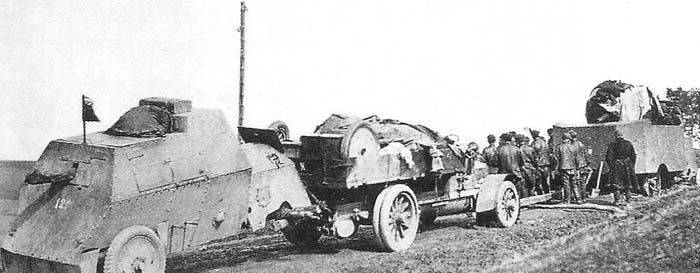
There is information about the construction of several other armored vehicles on the basis of a similar chassis. Simultaneously with the Type C machines, at the Izhora plant, several armored vehicles were assembled with an open-top hull, two machine guns in the embrasures and one light machine gun. According to others, these were armored cars, which differed from the original design configuration only by the lack of a roof. In addition, there were several anti-aircraft armored vehicles with 76-mm guns. During the construction of this technique, some work was done according to the Dobrzhansky project.
One month after the formation, 19 of October, the 1 th company was sent to war. As the place of service of new armored vehicles was chosen the most problematic area of the front. By this time, the Russian army was forced to retreat in Prussia and Poland, where they sent an automobile machine-gun company. She had to obey the command of the 2 Army. By the end of the month, the armored cars were preparing to join the battle and run in new conditions.
9 November was the first battle with the participation of serial domestic armored vehicles, not remembered with special success. The next day, the armored cars showed their full potential. Immediately, six Type C cars broke through the town of Strykov, where the enemy was. In addition, two cannon armored cars supported the advance of rifle regiments. For the successful completion of the task several officers were presented to the awards.
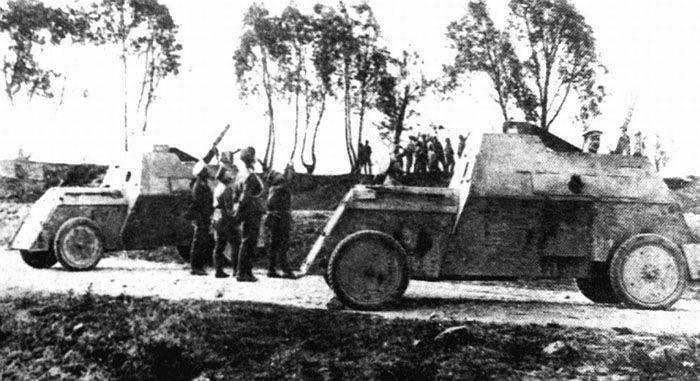
In the future, 1-I automotive machine-gun company participated in the battles in various parts of the front, effectively supporting the infantry with cannon and machine-gun fire. In this case, the machines often fell under enemy fire, which led to the appearance of holes and injured crews. However, the damage inflicted on the enemy was incomparably higher.
As a result of the first months of operation of armored vehicles of the Russo-Balt Type C and other vehicles of the 1-th automobile machine-gun company, certain conclusions were made. It turned out that the cars have both advantages and disadvantages. Positive quality was considered a relatively high firepower and quantity of equipment. On the battlefields of the First World, even one machine-gun armored car was a serious force, not to mention more numerous compounds.
However, disadvantages were also identified. Despite the best efforts of Colonel Dobzhansky and engineer Grauer, the 5-mm armor of the machines did not provide the required level of protection. She only saved from shelling from distances greater than 200-300 m, which in some situations was not enough. Moreover, at short distances, penetrating penetrations with rifle bullets were not excluded. Also in the fall showed a low patency of cars on the road. Sufficient mobility was provided only on unpaved roads, however, in this case, it left much to be desired.
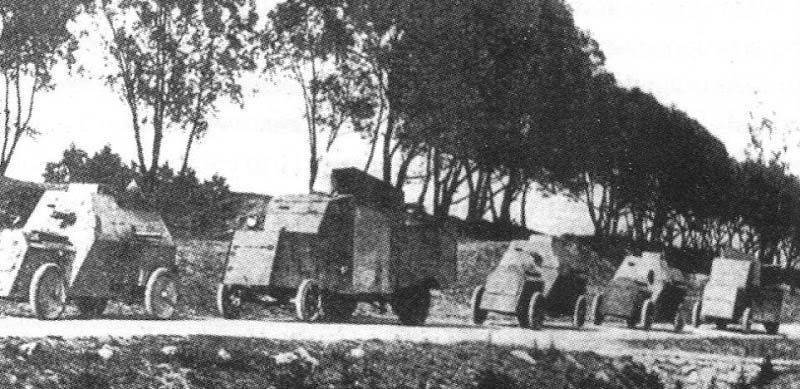
Despite the identified shortcomings, the operation of the new technology allowed us to determine the most effective tactical techniques. 11 February 1915, the military department issued a special instruction, which should be followed by further operation of all types of armored vehicles. Like other new compounds, the 1-I automotive machine-gun company studied this document and began to use it in practice.
From time to time, the 1 Company received new armored vehicles of various types. At the end of autumn 1916, the company was reformed into the 1 armor division. By this time, various types of equipment were present in the compound, including several vehicles from the very first company.
Several Russo-Balt Type C cars survived until the beginning of the Civil War. According to some reports, all the remaining armored cars went to the Red Army, which used them in various operations. It is known that one of the "red" armored cars managed to change hosts twice. So, in the summer of 1919, the 21 fighter of the auto-squadron was forced to abandon its car, which is why it became a trophy of the White Guards. A few months later, the 32 autoradronome of the 1 cavalry army beat off the car during the offensive. In the future, this armored car was used only by the Red Army.
According to various sources, less than half of the Type C cars remained in the ranks until the end of the Civil War. So, in 1921, in the different divisions of the Red Army there were only three such armored cars. Others were destroyed in battle or dismantled due to the development of the resource. The remaining cars in the army also did not have a high resource, which is why they were also disassembled as superfluous.
All eight armored cars "Russo-Balt Type C" were destroyed or disposed of. However, there is now the opportunity to see a similar car. In 2009, enthusiasts from the Moscow club historical reconstruction "Leibstandart", using the original drawings, built a full-size copy of the first domestic serial armored car. The resulting replica was present for some time in the exposition of the State Central Museum of Contemporary History of Russia (Moscow). In addition, the armored car occasionally participates in various military-historical events.
Based on:
http://aviarmor.net/
http://zonwar.ru/
Baryatinsky MB, Kolomiets M.V. Armored cars of the Russian army 1906 – 1917 - M .: Technics-youth, 2000
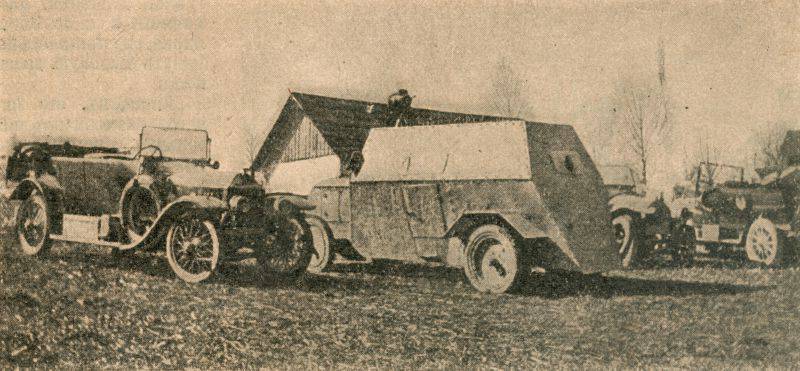
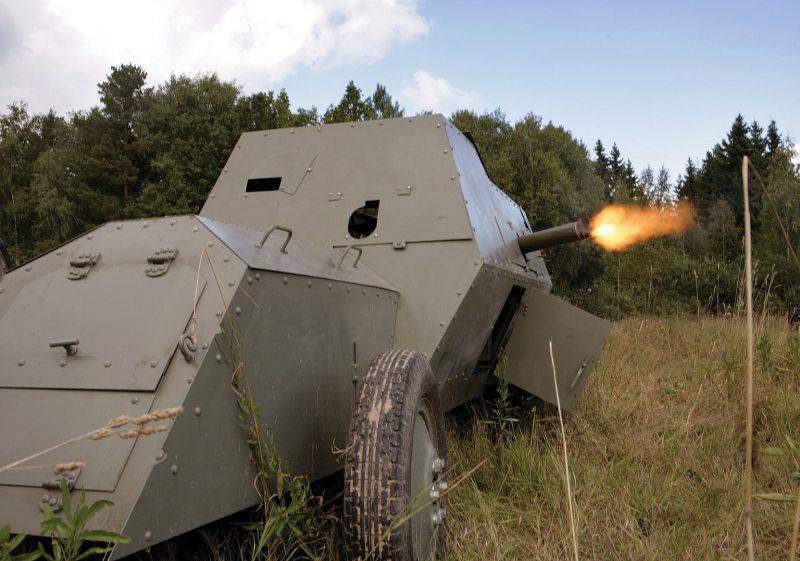
Information